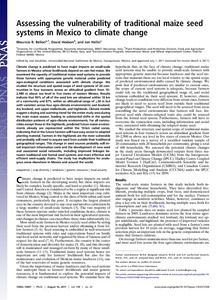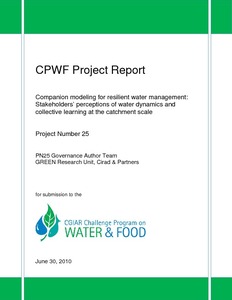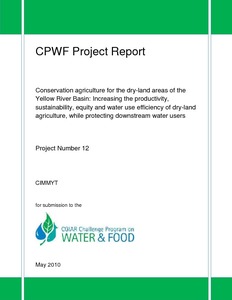Location
US Postal address:
C.I.P./Mexico/ AP # 370
P.O. Box 60326
Houston TX 77205 U.S
CIMMYT works throughout the developing world to improve livelihoods and foster more productive, sustainable maize and wheat farming. Our portfolio squarely targets critical challenges, including food insecurity and malnutrition, climate change and environmental degradation.
Through collaborative research, partnerships, and training, the center helps to build and strengthen a new generation of national agricultural research and extension services in maize- and wheat-growing nations. As a member of the CGIAR System composed of 15 agricultural research centers, CIMMYT leads the CGIAR Research Programs on Maize and Wheat, which align and add value to the efforts of more than 500 partners.
Turning research into impact
- By conservative estimates, this work provides at least $2 billion in annual benefits to farmers.
- CIMMYT alumni include a Nobel Peace Prize laureate and three World Food Prize winners.
- CIMMYT’s success depends on the longstanding partnerships and trust of public agricultural research systems, private companies, advanced research institutes and academia, and non-governmental and farmer organizations.
- More than 70 percent of the wheat grown in developing countries and more than 50 percent of improved maize varieties derive from CIMMYT breeding materials.
- More than 10,000 scientists have trained at CIMMYT and gone on to become leaders in their own countries. The center empowers thousands of students, extension workers and farmers through courses, workshops and field days.
Members:
Resources
Displaying 11 - 15 of 38Quantifying Production Losses due to Drought and Submergence of Rainfed Rice at the households level Using Remotely Sensed MODIS data.
Combining remotely sensed Moderate Resolution Imaging Spectroradiometer (MODIS) data with Bangladesh Household Income and Expenditure Survey (HIES) data, this study estimates losses in rainfed rice production at the household level. In particular, we estimated the rice areas affected by drought and submergence from remotely sensed MODIS data and rice production from Household Income and Expenditure Survey (HIES) data for 2000, 2005 and 2010. Applying two limit Tobit estimation method, this study demonstrated that both drought and submergence significantly affected rice production.
Contextualizing family agriculture in Nicaragua: preliminary results on a cross-CRP collaboration
Assessing the vulnerability of traditional maize seed systems in Mexico to climate change
Climate change is predicted to have major impacts on small-scale farmers in Mexico whose livelihoods depend on rain-fed maize. We examined the capacity of traditional maize seed systems to provide these farmers with appropriate genetic material under predicted agro-ecological conditions associated with climate change. We studied the structure and spatial scope of seed systems of 20 communities in four transects across an altitudinal gradient from 10–2,980 m above sea level in five states of eastern Mexico.
Companion modeling for resilient water management: Stakeholders’ perceptions of water dynamics and collective learning at the catchment scale
The project specific objectives were threefold: (i) Methodological development by
Conservation agriculture for the dry-land areas of the Yellow River Basin: Increasing the productivity, sustainability, equity and water use efficiency of dry-land agriculture, while protecting downstream water users
Soil erosion is a major problem in the Yellow River Basin: the river is one of the most
sediment-laden in the world. Although there is a rainfall gradient from 750 mm in southern
Shandong, to 200mm per year in northern Ningxia, most of the rainfed cropping area is in
regions with more than 400 mm per year – it is here that the project concentrated.
Conservation agriculture (featuring reduced or zero tillage, mulch retention, crop rotations
and cover crops) offers a possible solution to problems of soil erosion and low crop







